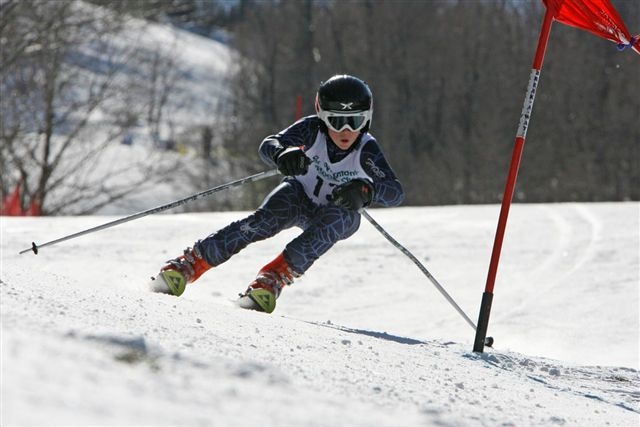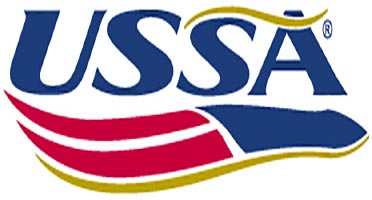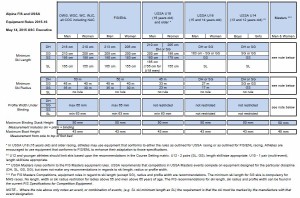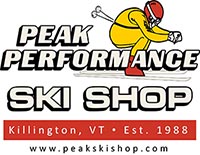Should you buy new junior race skis?
Your child is returning from summer ski camp. If you haven’t decided already, now is the time to decide whether to keep the skis they are bringing home from camp or buy new junior race skis. But how do you know when it is time to move on from a pair of skis?
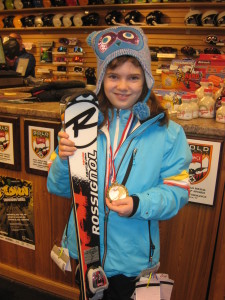
There are several reasons to buy new junior race skis:
- USSA/FIS rules change. There are different rules for each age category that dictate ski length and ski radius. These rules can change from season to season. They are determined at the USSA Congress in April each year. Keep up-to-date on the USSA ski racing rules matrix so you know if the rules have changes for the category your child skis in and whether you have to buy new skis. We’ve summed up the 2015-16 ski rule changes in our blog post Race Ski Rules 2015-16 for USSA and FIS Alpine Racers.
- USSA/FIS Category change. If your child changes racing category (ie; goes from a U12 to a U14) they will probably need a new pair of skis as well as some other new equipment (helmet, shin guards, etc.) Refer to your local ski racing club website or the USSA Alpine Athlete Rules (this will not be completely updated for the up-coming season until September) to determine what equipment you will need to replace. We summed up the helmet rule changes in our blog post USSA Ski Racing Helmet Rules for 2015-16. We think the Pennsylvania Alpine Racing Association (PARA) did a nice job summarizing the 2015-16 rule changes on their website with their page USSA Updates for 2015/16 Season.
- Growth spurt. Where do your child’s skis measure up to them? Recommended length for SL skis is between the mouth and forehead. Recommended length for GS skis is 10 – 20cm longer than their SL skis (this varies/changes as the child gets older). Minimum length for junior GS skis should be head height, and the more skillful junior skiers should be skiing on GS skis that are over head height. If your child’s current SL or GS skis are already too short or very close to being too short, it is time to move on.
- Performance Issues. Does the ski your child is currently using work for your child? Can they turn the ski they are using effectively? Or do they need a softer or stiffer ski? Talk to your child’s coaches and determine if you should buy new junior race skis that will work better for your child.
- Quality Issues. How do the bases look? How do the edges look? How many times has the ski been tuned? When you have watched your child ski does it seem to perform as it should? Does your child have any feedback on how they feel it is performing? We feel a junior race ski in its 2nd season of use can still be a good race ski. A junior race ski in its 3rd season of use should be used as a trainer only. A junior race ski in its 4th season of use should be replaced. If the skis your child is currently using have been handed down several times, or was purchased used and is starting to look pretty bad, it’s probably time to replace it.

Ski racing is an expensive sport. Don’t become a ski collector. Make a decision to get new skis in spring or summer and sell off the skis you are replacing as soon as possible to fund the next pair of skis. Selection is best for buying new skis in summer and fall. Many places hold used ski swaps in the fall. New Englanders can usually find a list of used ski swaps on Boston.com, or skimaven.com does a nice comprehensive list each year. We feel the best time and place to sell off used race gear in Vermont is at the Pico Ski Swap or the Killington Ski Club Ski Swap on Columbus Day weekend at the Snowshed Base Lodge at Killington Resort. The Killington Swap is one of the largest used ski swaps on the east coast and typically has a lot of race skis, gear and race suits.
So when your kids get back from summer ski camp, take some time and determine if now is the time to buy new junior race skis. The sooner you do it the better the chance of getting what you want and need. You don’t need to pre-order your race skis or wait for a special day to buy them – manufacturer’s sponsored race pricing is available every day of the year for USSA and FIS racers at Peak Performance Ski Shop and on peakskishop.com.
